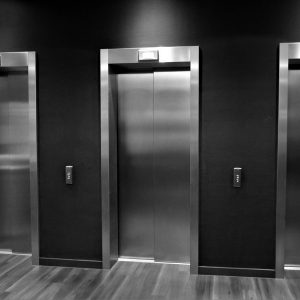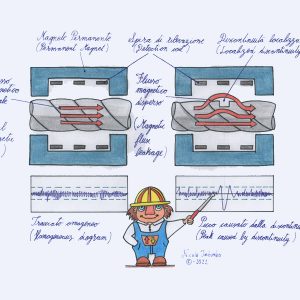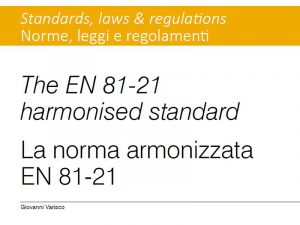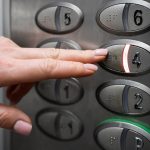The EN 81-71 standard
By Giovanni Varisco
Published on Elevatori Magazine Issue 2 Year 2018
The current conditions in the various countries of the world are such that there are people who have an unhealthy desire to use violence also on objects, and lifts can be one of their targets. There are various environments where vandalism is practised and in such cases lifts and systems in general can suffer significant damages affecting their operation and therefore the reliability that such equipment must have to serve users. The purpose of this article is to provide a description of the concepts to be adopted in relation to lifts which must provide resistance to foreseeable vandalism without, however, giving specific details which are left to a careful reading of the standard, part of the EN81 family of standards with the numbering EN 81-71 and the title “Vandal resistant lifts”. Like the other harmonised standards, EN 81-71 was written by CEN (European Committee for Standardisation) on behalf of the European Commission.
Targets
EN 81-71 standard provides guidance to the building designer, stating the requirements for design where additional safety is taken into consideration. Alternatively, other measures may be required to protect against the risk of vandalism, taking due account of the environment where the lift is installed and the type of vandalism that is likely to be experienced, which unfortunately occurs in deliberate acts that may result in damage to equipment or injuries to persons.
Dangers
The standard takes into account various hazardous situations related to vandalism and it especially examines the degree of accessibility of the installation and the surrounding area as well as the visibility, safety of the building and the surveillance of the lift, as well as the period of access to the building and the lift and their vulnerability. In the formulation of the EN 81-71 harmonised standard, assumptions were made as described below.
Basic assumptions and definitions
The lift is designed to meet the basic requirements of general reference harmonised standards (EN 81-1 or EN 81-2, and EN 81-20 and EN 81-50). In addition, the lift, the lift shaft, landings and access areas, machinery space and associated equipment shall be kept in an adequate and safe operating condition. The forces applied to the lift and its equipment shall be the result of manual effort or by means of objects defined in Annex E to the standard.
The standard defines three categories of lifts (called 0, 1 and 2) referring respectively to
• a lift designed to meet the basic requirements of EN 81,
or
• a lift that meets additional requirements to safeguard the installation from acts of moderate vandalism,
or
• a lift that meets additional requirements in order to protect the installation from acts of serious vandalism.
Requirements and protective measures
As already mentioned above, it is not possible – for various reasons not only of space – to report here all the EN 81-71 requirements for which reference is made to the text of the standard and therefore we limit ourselves to the aspects that are more important.
The shaft for Category 1 lifts with a partially enclosed shaft shall have enclosures with a height ≥ 5.0 m while Category 2 lifts shall have a fully enclosed shaft and the enclosures shall have adequate mechanical strength.
Sufficient strength conditions are also established for inspection and rescue doors.
Spaces, machinery rooms and deflection pulleys shall have adequate resistance against the access by unauthorised persons and the standard specifies the values to be observed for the different types of lifts (1 or 2) including the characteristics of windows if accessible to persons.
Intrusion alarms shall be provided for category 2 lifts and the standard shall establish the audibility conditions to be observed. Landing and car doors shall be automatic doors with horizontal movement and made of non-flammable and non-combustible materials as specified in EN 81-71 and these shall pass impact tests with the pendulum and be manufactured without the use of glass peepholes (category 2 lifts).
Still in category 2: at each floor, a safety system shall prevent the door from being opened with an emergency release key except when the system has been deactivated
by means of a device located at least in the machinery room or in the machine cabinet or in the emergency test control panel.
After manual deactivation, the system must be automatically reactivated after a period of 30 to 60 minutes.
If the lift is being inspected or a stop button is operated, the time counter must stop and if the lift is back to standard operation, the time sequence must be restarted.
The car door shall be fitted with a mechanical locking device.
The car structure, wall panels, materials and devices installed therein must also have resistance features – even against shearing – such that they are capable of providing sufficient resistance to mechanical and chemical – also against cutting – vandalism by means of corrosive substances.
The removable parts must only be removable with special tools and fixings not visible to users (the latter requirement is for category 2).
The pushbuttons shall be water resistant according to IPX3 and pass the fire and impact resistance tests as stated in the Annex to EN 81-71 and the alarm button – if pressed – shall emit a strong sound signal compared to the usually expected one.
Warnings and markings shall be such that they cannot be removed.
Owner Guide
With respect to the usual instructions, the Owner shall be informed about the appropriate cleaning materials to be used and the need for regular checks from the building management to detect any signs of damage and repair them quickly or remove the lift from service in case of danger.
This information should also indicate the need to keep the building floors clean and dry as well as to check the operation of the unlocking system for the rescue of persons and the need to keep the access path free from combustible materials.
The owner must also be informed of the need to check for any dangerous corrosion on elements that are important from the point of view of strength (platform, frame,
door shoes, etc.).
Conclusions
This is a non-compulsory standard which the owner can apply if they deem it as necessary against vandalism.













